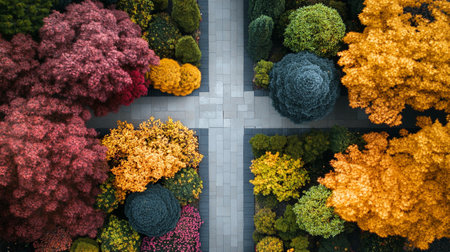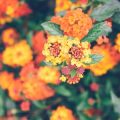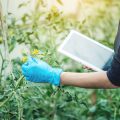1. Understanding Anthracnose: What It Is
Anthracnose is a widespread fungal disease that poses a significant threat to both shade trees and turfgrass across the United States. This plant ailment is primarily caused by several species of fungi in the Colletotrichum and Gloeosporium genera, which thrive in cool, wet spring weather commonly experienced in many regions of the U.S. In shade trees such as sycamore, oak, maple, ash, and dogwood, anthracnose leads to symptoms like leaf spotting, wilting, premature leaf drop, and twig dieback. On turfgrass—including popular varieties like Kentucky bluegrass and perennial ryegrass—anthracnose often results in yellowing patches, thinning grass, and unsightly lesions on blades and stems. Understanding which pathogens are responsible for outbreaks is crucial because management strategies can vary depending on the specific host and fungus involved. The disease spreads through water splashes from rain or irrigation, infected plant debris, and contaminated equipment, making it especially problematic for landscapes with dense tree canopies or poorly drained turf areas. By recognizing anthracnose’s causes and how it persists in American environments, property owners and landscapers can take informed steps to protect their trees and lawns.
Recognizing the Signs and Symptoms
Anthracnose is a widespread fungal disease that can cause significant problems in both shade trees and turfgrass across the United States. Early identification is crucial for effective management, so understanding the key indicators is essential for homeowners, landscapers, and groundskeepers alike. The symptoms often vary depending on the type of plant infected but tend to follow similar patterns, making them recognizable if you know what to look for.
Common Signs in Shade Trees
In shade trees such as American sycamores, maples, oaks, and ash—frequent fixtures in U.S. parks and neighborhoods—the first signs of anthracnose are usually irregular brown or tan spots along the veins of young leaves. As the infection progresses, these spots may enlarge, merge, or cause leaf distortion and curling. Severely affected leaves may drop prematurely, leading to thinning canopies during late spring or early summer, especially after cool, wet weather.
Key Indicators in Turfgrass
Turfgrass species common to American lawns—like Kentucky bluegrass and perennial ryegrass—show anthracnose through different but equally telling symptoms. Look for yellowing patches that turn straw-colored over time, often beginning at the tips of grass blades. These patches can expand and coalesce, resulting in noticeable thinning or bare areas on putting greens, sports fields, or home lawns. In advanced cases, a black, rot-like appearance may be seen at the base of grass stems.
Table: Anthracnose Symptoms in Shade Trees vs. Turfgrass
| Plant Type | Common Symptom | Example from U.S. Landscapes |
|---|---|---|
| Shade Trees (Sycamore, Maple) | Irregular leaf spots along veins; premature leaf drop; twig dieback | Bald patches in urban park canopies during late spring |
| Turfgrass (Kentucky Bluegrass) | Yellowing and thinning; black stem bases; patchy dead areas | Sparse putting greens or patchy residential lawns during humid summers |
When to Take Action?
If you notice any of these signs—especially following cool, rainy spells—it’s important to act quickly. Early intervention helps prevent further spread and long-term damage to your landscape investment. In the next sections, we’ll discuss how anthracnose impacts tree health and lawn performance before covering proven treatment strategies tailored for American landscapes.
![]()
3. Common Shade Trees and Turf Grasses Affected
Anthracnose is a widespread fungal disease that targets a range of shade trees and turf grasses, with certain species proving especially vulnerable depending on the region within the United States. Among shade trees, maples (Acer spp.) and oaks (Quercus spp.) are particularly susceptible. In the Midwest and Northeast,
Sugar maples, red maples, and white oaks
frequently display anthracnose symptoms, especially during cool, wet springs.
Sycamores (Platanus spp.)
—especially American sycamore—are also highly affected in eastern U.S. cities and suburban areas, often showing significant leaf blight and twig dieback.
Other shade trees commonly impacted include
Ash (Fraxinus spp.), elm (Ulmus spp.), dogwood (Cornus florida), and walnut (Juglans nigra)
. The extent of damage varies by tree age, health, and prevailing weather patterns; young leaves and shoots are most at risk during prolonged periods of moisture.
Turf grasses are not immune to anthracnose either. Annual bluegrass (Poa annua) is notorious for its high susceptibility, particularly on golf courses across the North and Pacific Northwest.
Creeping bentgrass (Agrostis stolonifera)
, widely used for putting greens, can also suffer from both foliar blight and basal rot forms of anthracnose under stress conditions like heat or low mowing heights. In warmer southern regions, varieties of Bermudagrass may be sporadically affected but generally show greater resistance than cool-season grasses.
Understanding which trees and grasses are most at risk in your local area helps homeowners, groundskeepers, and landscapers focus their monitoring and management efforts where they matter most, ensuring healthier landscapes throughout the changing seasons.
Impact on Trees, Lawns, and Local Environments
Anthracnose can have far-reaching consequences beyond just the visible damage to shade trees and turf. Its presence in American yards and public green spaces poses economic, aesthetic, and environmental challenges that impact homeowners, municipalities, and local ecosystems alike.
Economic Consequences
The economic impact of anthracnose is felt by both private property owners and public agencies responsible for maintaining parks, boulevards, and sports fields. Infected trees may require costly pruning or removal, while lawns suffering repeated outbreaks often need overseeding or specialized treatments. Municipal budgets are strained when large numbers of street trees are affected, leading to increased maintenance costs and potential liability if weakened branches fall.
| Stakeholder | Economic Impact |
|---|---|
| Homeowners | Tree care expenses, lawn renovation costs |
| Municipalities | Increased maintenance budgets, tree replacement fees |
| Landscapers & Arborists | Higher demand for services during outbreaks |
Aesthetic Losses
An outbreak of anthracnose can quickly strip a landscape of its visual appeal. Discolored patches in lawns or premature leaf drop in shade trees diminish curb appeal, potentially lowering property values and neighborhood satisfaction. Public parks and recreation areas may lose their inviting green appearance, impacting community events and daily enjoyment for residents.
Common Aesthetic Issues Caused by Anthracnose:
- Browning or blackening of leaves and grass blades
- Sparse tree canopies due to early leaf loss
- Poor turf density with unsightly bare spots
- Increased presence of dead twigs or branches in trees
Environmental Impact
The effects of anthracnose extend into the local environment. When shade trees lose leaves prematurely year after year, their ability to provide cooling shade is reduced—a critical factor in urban heat management across American cities. Thinning lawns can lead to soil erosion and runoff problems, especially during heavy rains. In naturalized park settings, repeated infections may alter plant community structure as weakened species decline over time.
Summary Table: Anthracnose Impacts on American Green Spaces
| Impact Type | Description | Example Areas Affected |
|---|---|---|
| Economic | Costly maintenance and replacement needs for infected vegetation | Private yards, city parks, school campuses |
| Aesthetic | Diminished landscape beauty from damaged trees/lawns | Curbside plantings, residential lawns, golf courses |
| Environmental | Reduced ecosystem benefits such as shade, air purification, and soil stability | Urban forests, public greenways, playgrounds |
Managing anthracnose is not just about protecting individual plants—it’s crucial for maintaining the health, function, and visual enjoyment of American landscapes at large.
5. Treatment and Management Options
Best Practices for Preventing and Treating Anthracnose
Effectively managing anthracnose in shade trees and turfgrass requires a combination of proactive strategies and targeted interventions. In the United States, integrated approaches that blend chemical, cultural, and long-term health practices are widely recommended.
Fungicide Use
Fungicides can be effective in controlling anthracnose, especially when infections are detected early. Products containing chlorothalonil, propiconazole, or azoxystrobin are commonly used in the U.S. Always follow label directions and apply during periods of active disease development, typically in cool, wet weather. For shade trees, applications should target newly emerging leaves; for turfgrass, preventive sprays in spring and fall offer the best protection. Rotation of fungicides with different modes of action is crucial to prevent resistance.
Cultural Methods
Cultural control forms the backbone of anthracnose management. For trees, regularly prune to improve air circulation and remove infected twigs or leaves. For lawns, avoid mowing when grass is wet, use sharp mower blades, and dispose of clippings from infected areas to limit disease spread. Adjust irrigation schedules to water early in the day, allowing foliage to dry quickly. Aerate compacted soil and avoid excessive nitrogen fertilization, which can make plants more susceptible.
Long-Term Health Strategies
Promoting overall plant health greatly reduces vulnerability to anthracnose outbreaks. In tree care, select resistant species or cultivars suited for your region and maintain proper mulching practices to protect roots. In turf management, overseed with disease-resistant grass varieties that perform well in your local climate. Regular soil testing ensures balanced fertility and helps prevent stress conditions that favor disease development.
Integrated Approach for Lasting Results
Combining these methods offers the most reliable long-term results. Monitoring trees and turf regularly for early signs of anthracnose allows for prompt action. By integrating fungicide applications with solid cultural practices and focusing on plant health year-round, homeowners and landscapers across America can effectively minimize the impact of this common plant disease.
6. When to Seek Professional Help
While many cases of anthracnose in shade trees and turf can be managed with good cultural practices and timely interventions, there are situations where professional assistance becomes essential. Knowing when to call in an arborist or turf specialist can help prevent further damage and ensure the long-term health of your landscape.
Signs You Need a Pro
If you notice rapid decline in tree canopy, repeated leaf drop year after year, or large patches of discolored, thinning turf that don’t respond to basic care, it’s time to seek expert help. Additionally, if you’re unsure whether the symptoms are due to anthracnose or another disease, a professional diagnosis is crucial. Fungal diseases can sometimes resemble other stress factors, making proper identification key to effective treatment.
What Professionals Provide
Certified arborists and turf specialists bring a wealth of experience and diagnostic tools that go beyond what most homeowners have access to. They’ll conduct a thorough site assessment, identify the pathogen involved, and evaluate environmental factors contributing to disease severity. Based on their findings, they can recommend targeted fungicide applications, pruning techniques for infected branches, and adjustments to irrigation or mowing practices.
Benefits of Professional Treatment
By working with a pro, you gain access to advanced treatments not available over-the-counter, including systemic fungicides and specialized equipment for application. Professionals also follow industry safety standards, protecting both your property and the surrounding ecosystem. Their ongoing monitoring services can catch early signs of recurrence and keep your shade trees and lawns looking their best throughout the season.
Choosing the Right Expert
When selecting an arborist or turf care provider, look for ISA certification for arborists or accreditation from professional turf organizations. Ask about their experience treating anthracnose specifically, request references, and make sure they carry appropriate insurance. A reputable specialist will explain their recommended treatment plan in detail and answer any questions you have about the process.
In summary, seeking professional help for anthracnose is a smart move whenever disease pressure is high or when previous efforts haven’t produced results. With expert guidance, you can restore the health of your shade trees and turf while preventing future outbreaks.


